Treatments
Cosmetic dentistry not only can transform your smile, it is life changing). However many traditional cosmetic techniques can lead to healthy teeth being sacrificed due to much drilling in the pursuit of a beautiful smile. Dr Bassanini’s philosophy is to transform smiles and teeth whilst wherever possible respecting what nature has provided. He achieves this by using the latest in adhesive dentistry techniques, tooth whitening and cosmetic orthodontics.
Treatments offered include:
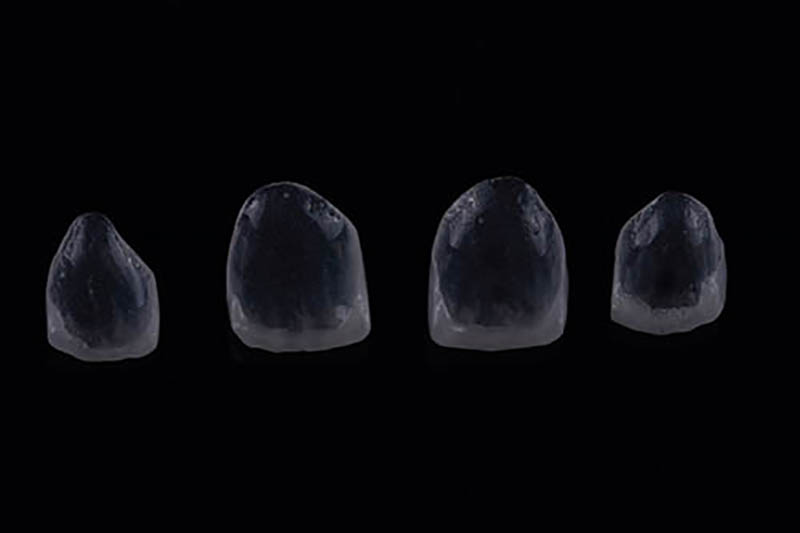
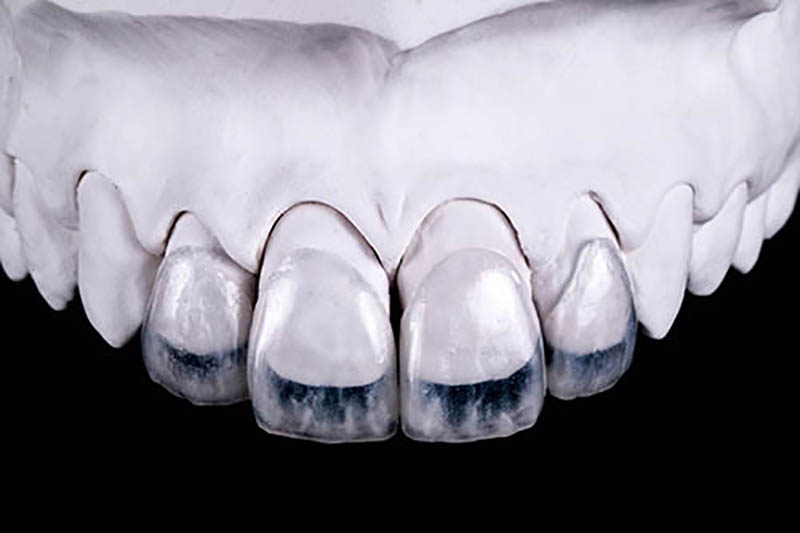
Porcelain veneers are customised thin shells of porcelain and when bonded over the front surface of the tooth can enhance and improve the shape, position and colour of the tooth. They are done by a master ceramist technician and they are coloured and shaped to mimic natural teeth. They obtain their strength and they support the tooth because of a strong adhesive which is used to cement them in place. They can be used to : correct poorly formed, stained, broken down, discoloured or mal-positioned teeth to create beautiful smile makeovers.
Veneers are generally constructed from porcelain as this looks more natural, attractive and resists stain better than other materials. Our veneers are fabricated with skill and precision by our team of experienced dental technicians. Using a highly skilled master ceramist to make very thin veneers will minimise the drilling needed to the teeth and in some cases eliminating it leading to a magnificent result.
 Before
Before
 After
After
White fillings consist of a specialised composite of high-strength resin impregnated with various types of ceramic filler particle. Composite fillings are bonded to the tooth (no need to drill the tooth) and more technically demanding to place than silver fillings therefore they can take longer to complete. The result can be stunning providing aesthetic and durable restorations difficult to distinguish from natural teeth. In practice we only use superlative materials which have been subjected to stringent tests and research.
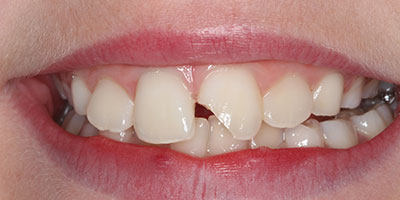 Before
Before
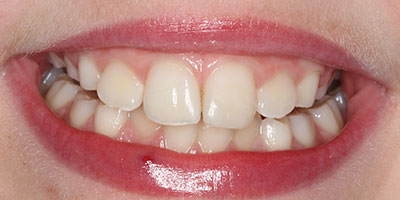 After
After
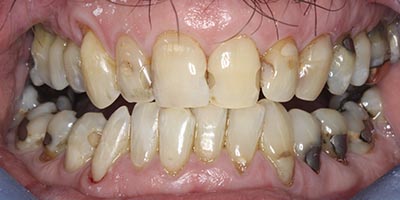 Before
Before
 After
After
Teeth discolour for various reasons including, staining from tea, coffee, following root canal treatment, as a result of trauma, and with age.
Tooth whitening is the safest most conservative way to improve the appearance of teeth and ¨freshening up¨ your smile . It makes the teeth become lighter and this successfully gives the appearance of a bright, white, beautiful smile. The whitening gel breaks up the internal stain within the teeth to ‘oxidise’ and remove the coloured compounds within the teeth which is completely safe and does not damage the teeth in any way.
 Before
Before
 After
After
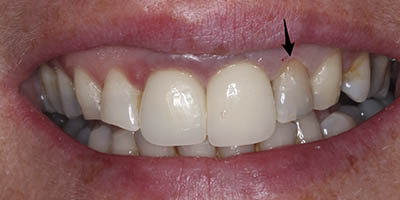 Before
Before
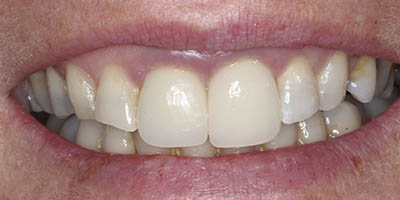 After
After
Cosmetic/Short term orthodontic treatment is focussed around just straightening the teeth that are visible when someone smiles producing dramatic results.
There are several types of braces that can be used and each has advantages and disadvantages depending on the individual case hence it is important to have the brace that is recommended to best treat your problem.
Many times treatments are followed up with tooth whitening and then direct bonding to rebuild any chipped/worn teeth. All the treatments require long term retainers.
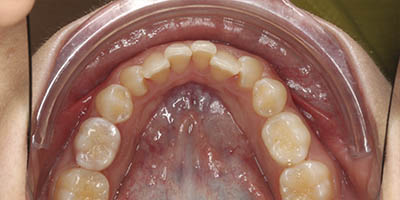 Before
Before
 After
After
Invisalign uses clear thin plastic braces to gently move the teeth. This clear nature makes them nearly invisible at a social distance. Each aligner is worn for 2 weeks and then replaced with the next one in the series until the teeth are straight. They must be worn for at least 22 hours per day and must be removed for eating and brushing. This is a benefit as it allows you to eat and clean as normal unlike fixed braces. Specialised computer software is used to design and fabricate the braces so we can preview the final result before we start..
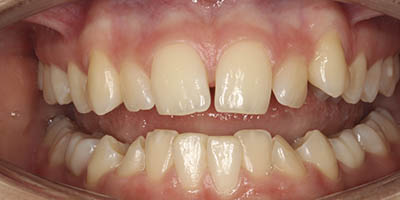 Before
Before
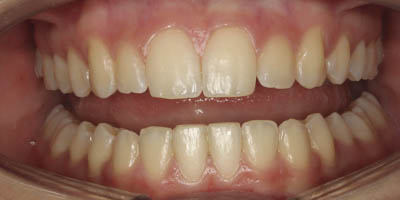 After
After
Regular hygiene visits can prevent the onset of gum disease as the treatment involves removing harmful bacteria that may be collecting in hard to reach areas.
Gum disease is the inflammation and infection of the tissues supporting the teeth caused by bad bacteria within dental plaque and tartar that forms on the surfaces of the teeth. It characterised by bleeding, receding gums and a loss of bone around the teeth. In order to prevent and treat gum disease, you need to make sure that you remove all these bacterial deposits on a daily basis. This is done by effective daily brushing, flossing and using interproximal brushes.
If left untreated teeth can become loose and be lost. Good oral hygiene and regular hygiene visits can help to prevent this.
Other periodontal or gum treatments include:
- Gum reduction surgery or crown lengthening.
- Involves the removal of excess gum tissue and sometimes a little amount of the supporting bone if the gums are very prominent and a large amount of gums shows when smiling (gummy smile).
The maintenance of good oral hygiene and diet regimes is of paramount importance to the protection of your teeth and gums, as well as helping to provide maximum longevity to any dental work that may have been carried out.
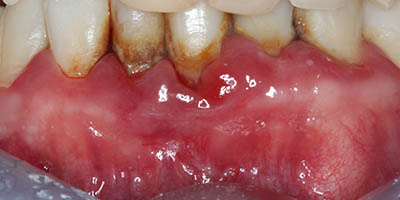 Before
Before
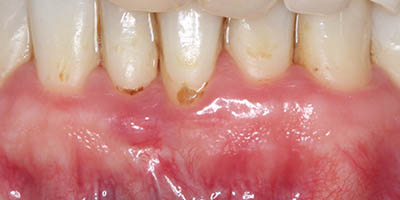 After
After
Dental implants and their restorations show very high success rates, and often they are an excellent and ideal option to replace missing teeth.
What are dental implants?
Dental implants offer a highly researched, predictable, conservative and ideal way of replacing missing teeth, with the patient being provided with a solution that mimics as closely as possible the natural tooth. The implant consists of a pure titanium post placed into the jaw bone and acts like the root of a natural tooth. After a suitable healing period (3-6 months) it is used to support the false tooth to be attached onto the implant . The replacement teeth might be fixed permanently (like a crown or bridge) or attached in a way which lets you remove them for cleaning (like a denture). This depends on the individual case, to allow for the optimal aesthetic and functional result.
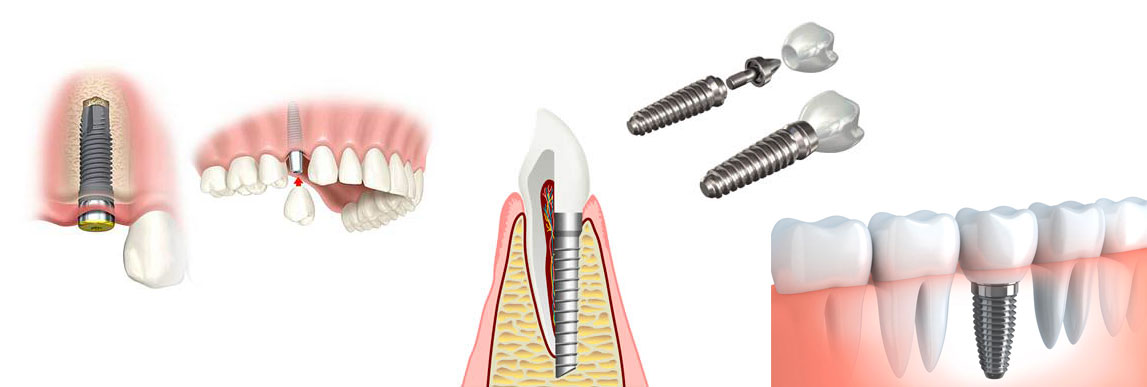
What is involved?
Implant treatment normally has two stages. First, the implant is placed in the jaw bone where the previous tooth was. Following a healing period of 3-6 months to allow bone to grow around the implant, the replacement teeth (crown/bridge-denture) are attached to the implant.
In some cases, the several implants may be fixed to a dental bridge or a denture to fill bigger spaces.
During the healing phase, in some situations, it is possible for temporary teeth to be attached to an implant at the time of fitting (for example on a case were the tooth replaced is a front tooth)
Other ways to replace missing teeth include bridges or dentures. However, dental implants are regarded as the best treatment in most situations as compared to bridgework the adjacent teeth are not drilled. They are also more comfortable than dentures which can rub and be unstable. This instability can mean certain foods are difficult to eat with dentures.
Am I suitable for treatment with dental implants?
Any patient who has missing teeth that they want replaced could be eligible for treatment with the use of dental implants. However, your suitability can only be confirmed following a thorough consultation and examination.
Crowns and onlays are provided to reinforce existing teeth, which may be biomechanically weakened from large fillings, cracks, or tooth wear. They will fully cover the tooth (crown) or partially cover the tooth (onlay). Crowns can be made from a variety of materials including resin, gold, metal-ceramic or full ceramic. They can protect the tooth from further breakdown, whilst at the same time restoring the tooth to an ideal shape, appearance and functional position. A crown or ‘cap’ that is placed over a tooth is held in place using dental cement.
Bridges
Bridges are provided to replace missing teeth, using the teeth adjacent to the gap as support. They are made as well as crowns from a variety of materials including resin, ceramic or a metal alloy and they are a fixed replacement. There are 2 options:
- Resin Retained Bridge
- Resin retained bridges are minimally invasive fixed prostheses which rely on composite resin cements for retention.
- Conventional Bridge
- A conventional bridge is a number of teeth joined together to bridge a gap caused by a missing tooth or teeth.
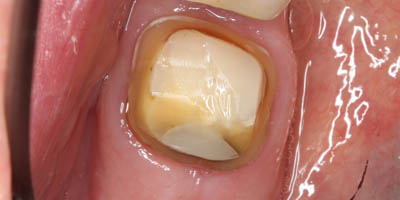 Before
Before
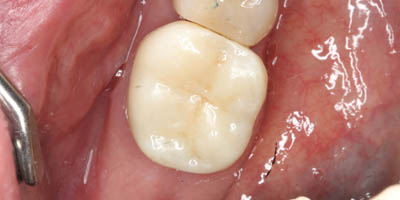 After
After
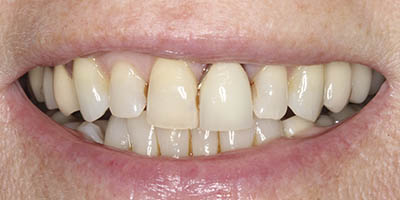 Before
Before
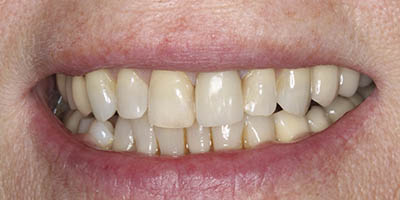 After
After
The digital smile design concept employs the latest digital techniques to help pre design a beautiful bespoke smile.
The process involves a video and photographic facial analysis of the patient to assess the relationship of the teeth, to the gums, lips and face in motion. This ensures a patients final smile perfectly suits their face.
The design process leads to the creation of a visual and attractive presentation of the treatment plan to the patient and then transformation of the digital design into something that can be tested and approved by the patient before the treatment itself begins. The process allows the patient to be involved in the design and gives them peace of mind that the outcome will be as they expect.
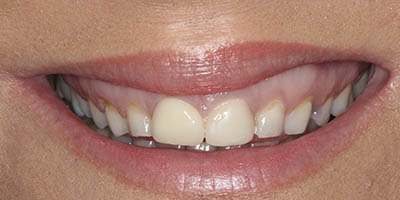 Before
Before
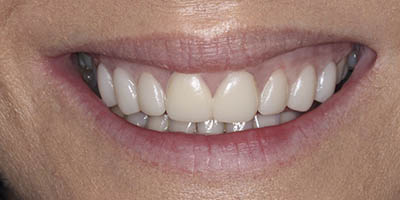 After
After
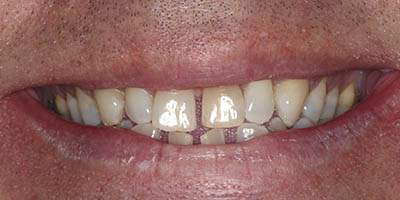 Before
Before
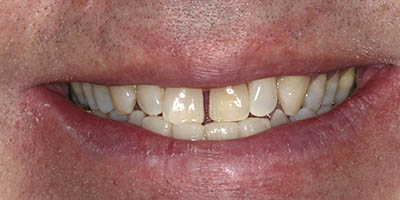 After
After
When Is Root Canal Treatment Needed?
Each tooth is made of layers (enamel and dentine) that protects the dental pulp, which lies within the centre of the tooth and contains blood vessels and nerves. The outer protective layers can be damaged by various processes such as tooth decay or clenching and grinding that causes cracks or fracture of the tooth. As a result bacteria will enter the pulp becoming infected and inflamed. The signs of an infected and inflamed pulp are pain, sensitivity to hot or cold, tooth discolouration, swelling and tenderness of the overlying gums or a bad taste in the mouth and pain on biting. On the other hand, there may be no symptoms at all. Root canal treatment is required in order to stop any toothache, remove the infected and inflamed pulp tissue and seal the pulp space in order to prevent more bacteria from entering and causing further infection. The procedure is carried out under local anaesthesia and is relatively comfortable. It can be completed in 1 or 2 visits. After treatment, the tooth may be slightly sensitive or tender for a few days, but this is usually managed with over-the-counter painkillers.

